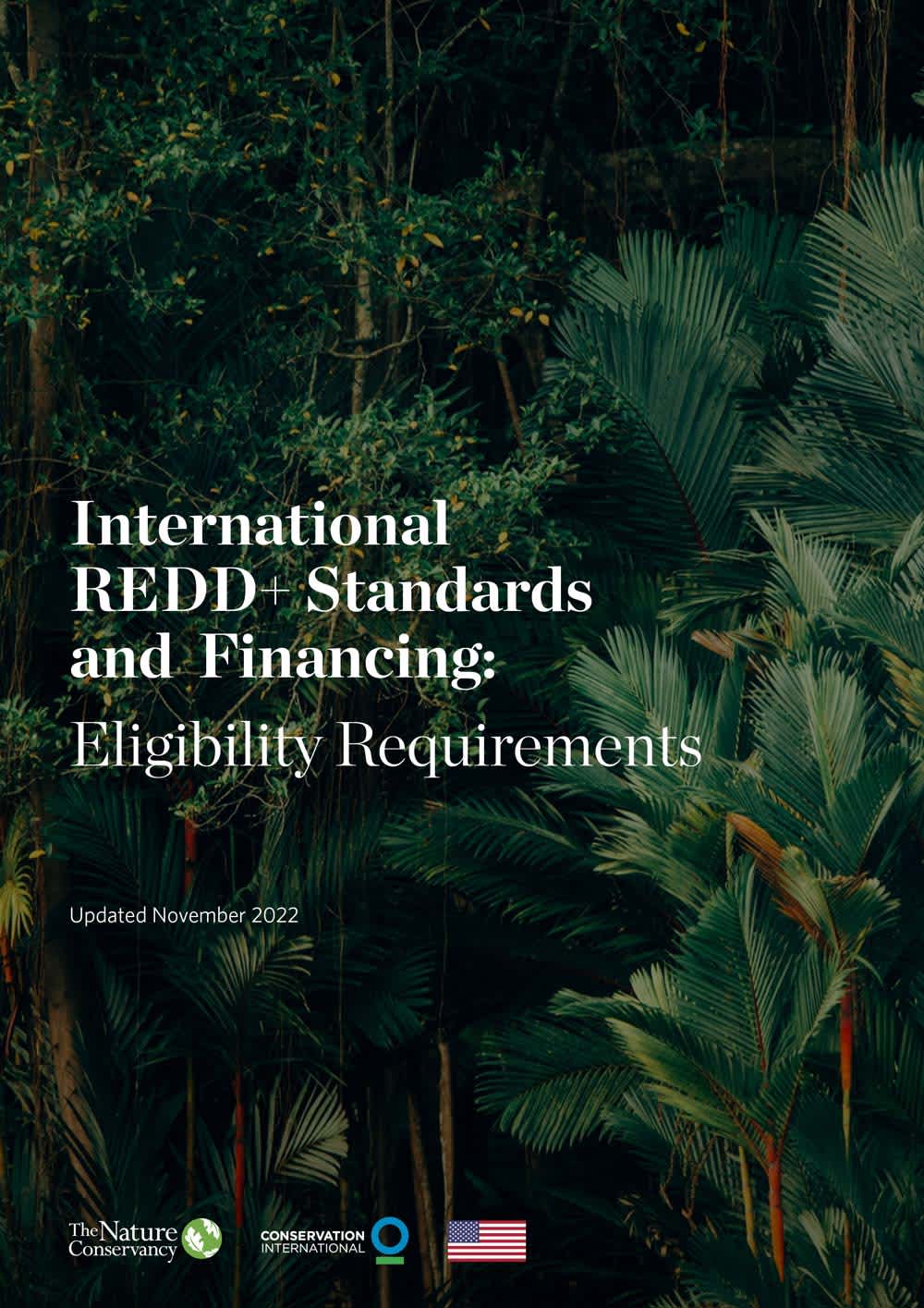
International REDD+ Standards and Financing: Eligibility Requirements
This report provides an overview of seven REDD+ standards, as well as the sources of finance for which they are eligible. Our goal is to simplify the understanding of various standards, funding sources, and markets for REDD+ in order to facilitate access to REDD+ finance.
- Author: Conservation International, The Nature Conservancy
- Updated: Nov 22

Standards
Select a standard to find out more and access documentation
ART TREES
The purpose of the Architecture for REDD+ Transactions (ART) is to promote the environmental and social integrity and ambition of greenhouse gas (GHG) emission reductions and removals (ERRs) from the forest and land use sector to catalyze new, large-scale finance for REDD+ and to recognize forest countries that deliver high-quality REDD+ emissions reductions and removals.
Secretariat: | Program launch date: | Standard: | Who gets credited: | Barriers to new participation | Types of finance | Financial Sources |
|---|---|---|---|---|---|---|
Architecture for REDD+ Transactions (ART) | ART Secretariat launched in 2018 | The REDD+ Environmental Excellence Standard (TREES) | National, or subnational governments | Open for participation | Market | *Pending |
California Tropical Forest Standard
The purpose of the California Tropical Forest Standard is to establish robust criteria against which to assess jurisdictions seeking to link their sector-based crediting programs that reduce emissions from tropical deforestation with an emissions trading system (ETS), such as California’s Cap-and-Trade Program.
Secretariat: | Program launch date: | Standard: | Who gets credited: | Barriers to new participation | Types of finance | Financial Sources |
|---|---|---|---|---|---|---|
California Air Resources Board, State of California | Officially endorsed on September 19, 2019 | California Tropical Forest Standard | Subnational or national jurisdictions | Open for participation | Market | *Pending |
FCPF Carbon Fund
The Forest Carbon Partnership Facility (FCPF) is designed to assist developing countries in their efforts on reducing emissions from deforestation and/or forest degradation”, conservation of forest carbon stocks, sustainable management of forests and enhancement of forest carbon stocks (“REDD+”) “by building their capacity and developing a methodological and policy framework that provides incentives for the implementation of REDD+ programs.
Secretariat: | Program launch date: | Standard: | Who gets credited: | Barriers to new participation | Types of finance | Financial Sources |
|---|---|---|---|---|---|---|
Facility Management Team (FMT) | May, 2011 | Carbon Fund Methodological Framework (Version: June 22, 2016) | Subnational or national jurisdictions | Open for participation | Market and non-market | *Pending |
Green Climate Fund
The objective of the RFP pilot program for REDD-plus RBPs is to operationalize REDD-plus results-based payments and gather experience to further improve the procedural and technical elements of RBPs using GCF resources in the learning stage.
Secretariat: | Program launch date: | Standard: | Who gets credited: | Barriers to new participation | Types of finance | Financial Sources |
|---|---|---|---|---|---|---|
Green Climate Fund Secretariat | October, 2017 | Terms of Reference for the Pilot Program for REDD+ Result-Based Payments as agreed by the GCF board in its 18th meeting | National governments, or subnational (interim basis) | Open for participation, however, funds have been exhausted, to be replenished pending board approval | Non-market (result-based payments) | *Pending |
Joint Crediting Mechanism
The JCM is a system to cooperate with developing countries for reducing greenhouse gas emissions, in which the result of reduction is assessed as contribution by both partner countries and Japan. The JCM aims at facilitating diffusion of leading decarbonizing technologies and infrastructure as well as implementation of mitigation actions, and contributing to sustainable development of partner countries.
Secretariat: | Program launch date: | Standard: | Who gets credited: | Barriers to new participation | Types of finance | Financial Sources |
|---|---|---|---|---|---|---|
Joint Committee, formed by the Government of Japan and the host country government | 2011 | Methodology to be approved by the Joint Committee | National governments | Open for participation | Market | *Pending |
United Nations Framework Convention on Climate Change2
With the adoption of the Warsaw Framework, the UNFCCC’s Conference of the Parties (COP) set out the decisions and rules for REDD+ result-based payments under the UNFCCC. Specific rules are contained throughout relevant COP decisions, Including basic requirements, safeguards and technical review procedures.
Secretariat: | Program launch date: | Standard: | Who gets credited: | Barriers to new participation | Types of finance | Financial Sources |
|---|---|---|---|---|---|---|
UNFCCC Secretariat | 2016, with the adoption of the Warsaw Framework | Relevant COP decisions: 2/CP.13, 4/CP.15, 1/CP.16, 2/CP.17, 12/CP.17, 1/CP.18, 9-15/CP.19 | National and sub-national (Interim) | Open for participation | Non-market (result-based payments) | *Pending |
Verra’s Jurisdictional and Nested REDD+
Verra’s Jurisdictional and Nested REDD+ (JNR) Program provides a framework for developing jurisdictional REDD+ programs that integrate (or “nest”) projects within a workable, practical, flexible, and robust carbon accounting and crediting platform that represents current best practices.
Secretariat: | Program launch date: | Standard: | Who gets credited: | Barriers to new participation | Types of finance | Financial Sources |
|---|---|---|---|---|---|---|
Verra | October, 2012 | Jurisdictional Nested REDD+ Framework (Version 4, April 15 2021) | National and sub-national jurisdictions. | Open for participation | Market | *Pending |
REDD+ Standards Disclaimer
This website is not intended to serve as an assessment of the quality of standards or a recommendation for which standards to use. Additionally, this website may not always reflect the latest updates of various REDD+ standards. Users are encouraged to check the official websites for individual standards to ensure they are working with the latest requirements.
